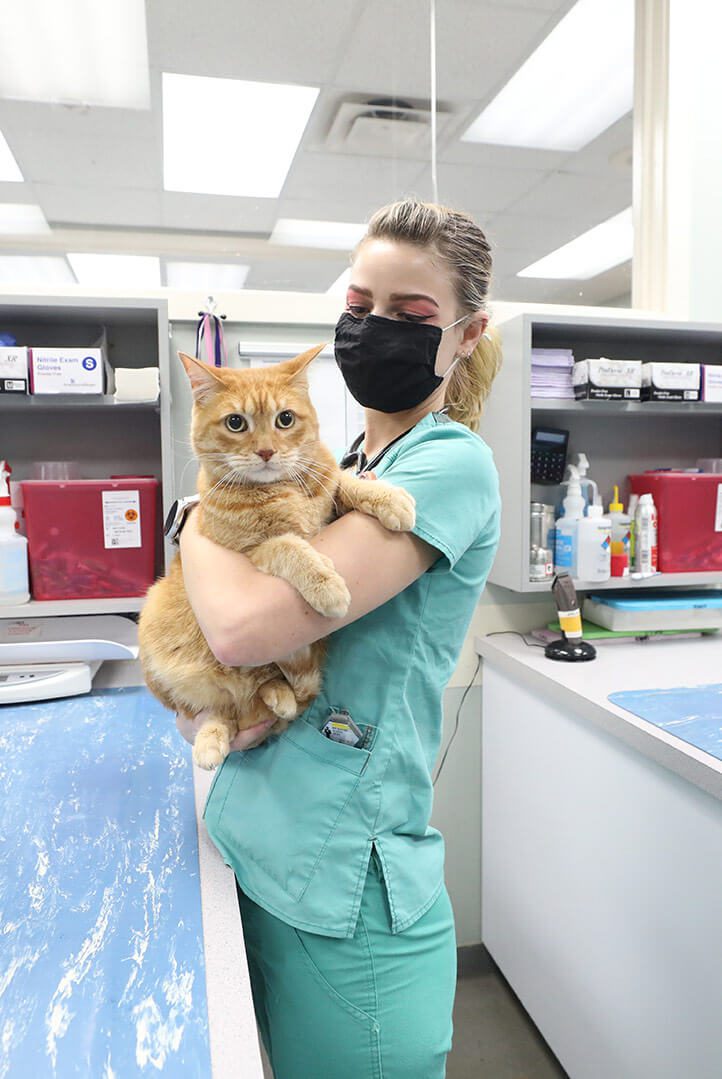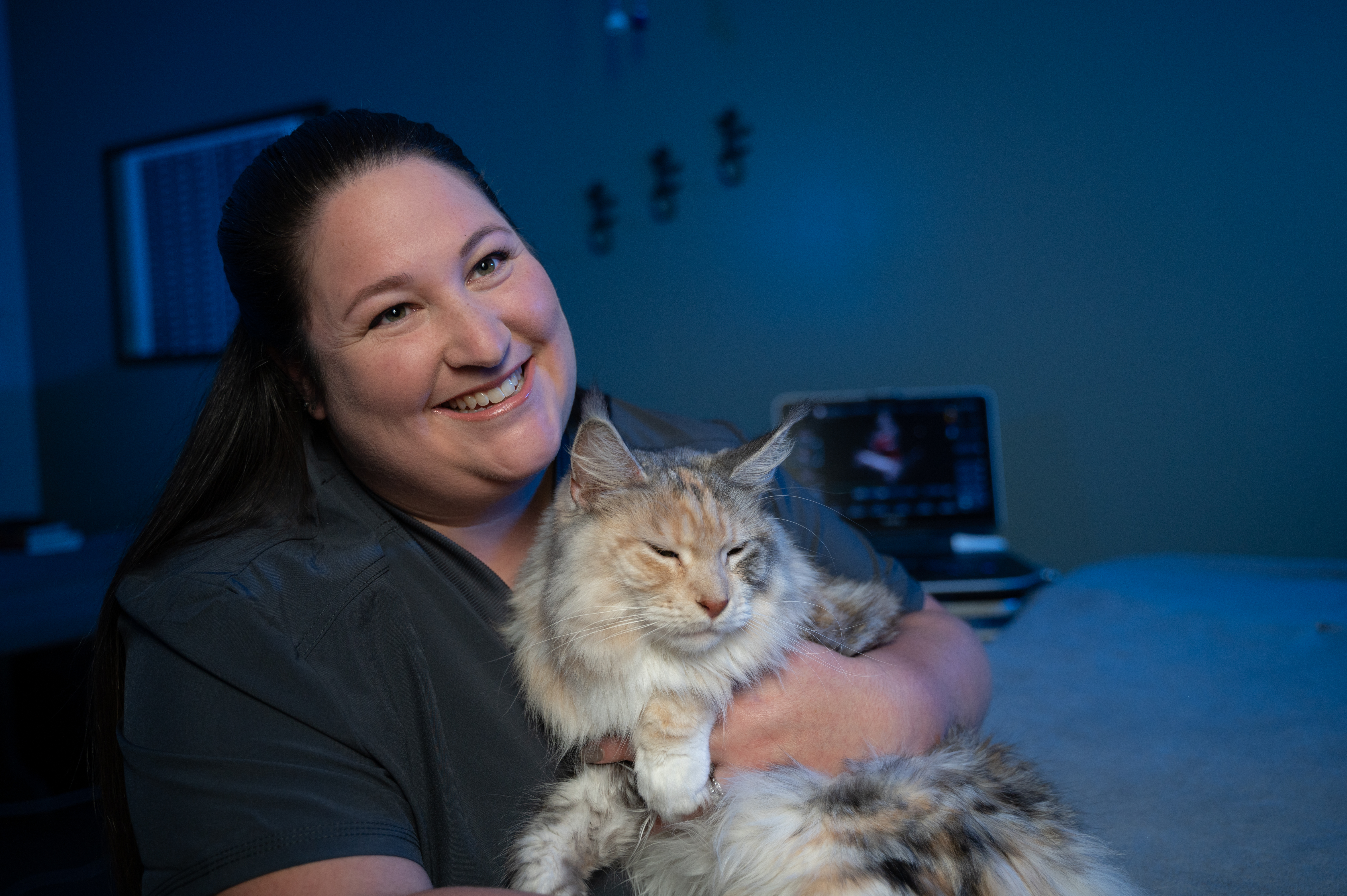A cure for hyperthyroidism in cats.
Like humans, cats have a thyroid gland that regulates their metabolism. If that gland develops a nodule (almost all are non-cancerous or benign), the cat will often develop hyperthyroidism -- a condition where the thyroid produces too much hormone and causes a significant increase in metabolism.
Cats with hyperthyroidism may show clinical signs and symptoms such as:
- Behavioral changes
- Increased appetite
- Increased thirst and urination
- Weight loss
- Rapid heartbeat
- Eliminations outside of the litter box
- Thinning coat or excessive grooming
- Vomiting and/or diarrhea
You know your pet better than anyone, so if you notice any of these signs, don’t wait to contact a veterinarian. Detecting hyperthyroidism early is key; left untreated, it can be fatal. Fortunately, you have BluePearl specialists to help diagnose and treat your cat with hyperthyroidism using radioiodine – a form of iodine that has been made radioactive – so they can live a longer, better life.

What to expect.
A single injection of radioiodine (also known as I-131) can completely cure hyperthyroidism in cats.
When injected, most of the radioiodine accumulates in the thyroid, while the rest is eliminated in your cat’s urine and feces. The radiation in the iodine destroys thyroid tumor cells and effectively cures hyperthyroidism.
Cats stay at the hospital in a special ward for a few days after treatment to allow for a certain amount of radiation to leave their bodies. The length of stay differs depending on the state’s regulations. We know that leaving your pet at the hospital is difficult, but know that we use this time for a bit of patient pampering in a quiet environment, including calming background music, special meals and lots of loving attention.
While it may require your pet to stay with us for a few days, the vast majority of cats who receive I-131 therapy never need to be treated again, so you’ll have more time to spend with them in the long run.

Find your nearest specialist.
We have over 100 specialty and emergency pet hospitals throughout the country.
Not all services are available in all BluePearl hospitals. Contact your local BluePearl for services available at that location.